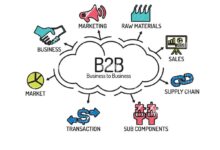B2B Companies: 7 Powerful Strategies for Explosive Growth
Ever wonder how businesses sell to other businesses? B2b companies drive the backbone of global commerce, shaping industries with strategic partnerships and long-term value.
What Are B2B Companies and How Do They Work?

B2B companies, or business-to-business firms, are organizations that sell products or services to other businesses rather than individual consumers. Unlike B2C (business-to-consumer) models, B2B transactions typically involve longer sales cycles, higher order values, and more complex decision-making processes.
The Core Definition of B2B Companies
At its essence, a B2B company operates within a supply chain where one business provides resources, tools, or expertise to another. These can range from raw materials for manufacturing to software solutions for enterprise management. The key differentiator is that the end customer is not the final consumer but another business entity.
- Examples include industrial equipment suppliers, SaaS platforms for HR management, and wholesale distributors.
- Transactions often occur through contracts, procurement departments, and formal negotiations.
- Relationships are built on trust, reliability, and long-term collaboration.
“B2B is not just about selling; it’s about solving business problems at scale.” — Michael Watkins, Harvard Business Review
How B2B Differs from B2C Models
While both models aim to generate revenue, the approach, messaging, and customer journey differ significantly. B2C marketing emphasizes emotion, impulse, and immediate gratification. In contrast, B2B marketing focuses on logic, ROI, and risk mitigation.
- B2B buyers require detailed information, case studies, and proof of performance before making decisions.
- Sales teams in B2B environments often engage with multiple stakeholders across departments like finance, IT, and operations.
- Customer lifetime value (CLV) is typically much higher in B2B due to recurring contracts and service agreements.
Key Industries Dominated by B2B Companies
B2B companies span nearly every sector of the economy, but certain industries rely heavily on business-to-business interactions to function efficiently. These sectors are characterized by high interdependence, specialized offerings, and large-scale operations.
Manufacturing and Industrial Supply
This sector includes companies that produce machinery, components, and raw materials used in production lines. For example, a steel manufacturer supplies metal sheets to automotive assembly plants. These relationships are often long-term and contract-based.
- Key players include Siemens, General Electric, and Caterpillar.
- Digital transformation is driving demand for smart manufacturing tools and IoT-enabled equipment.
- Supply chain resilience has become a top priority post-pandemic.
According to McKinsey & Company, over 70% of manufacturers are investing in digital B2B platforms to streamline procurement and logistics.
Information Technology and SaaS Providers
Technology-driven B2B companies have seen explosive growth, especially in cloud computing, cybersecurity, and enterprise software. SaaS (Software as a Service) models allow businesses to subscribe to tools like CRM systems, project management apps, and data analytics platforms.
- Leading examples include Salesforce, Microsoft Azure, and Slack.
- Subscription-based revenue models offer predictable income streams for B2B tech firms.
- Integration capabilities with existing systems are a major selling point.
A report by Gartner predicts global public cloud spending will reach $679 billion by 2024, underscoring the dominance of B2B SaaS solutions.
Professional Services and Consulting Firms
These B2B companies offer expertise in areas such as legal counsel, financial auditing, human resources, and strategic consulting. Their value lies in specialized knowledge and advisory services that help organizations improve performance.
- Firms like Deloitte, PwC, and McKinsey operate exclusively in the B2B space.
- Engagements are often project-based or retainer-driven.
- Success depends on thought leadership, brand reputation, and client outcomes.
“In B2B services, credibility is currency.” — Harvard Business School Insight
The Anatomy of a Successful B2B Company
Not all B2B companies thrive. The ones that do share common structural, cultural, and strategic traits that enable them to navigate complex markets and deliver consistent value.
Strong Value Proposition and Market Positioning
A clear value proposition answers the question: Why should another business choose you over competitors? It must articulate tangible benefits such as cost savings, efficiency gains, or competitive advantage.
- Effective positioning involves identifying niche markets or underserved segments.
- Value propositions should be backed by data, testimonials, and measurable results.
- Companies like HubSpot have built their brand around inbound marketing education and ROI-driven tools.
As noted by Harvard Business Review, the most successful B2B companies frame their offerings around solving specific business challenges rather than just selling features.
Robust Sales and Account Management Teams
B2B sales are relationship-intensive. A skilled sales team doesn’t just close deals—they build partnerships. Account managers act as strategic advisors, ensuring clients achieve their goals using the company’s products or services.
- Top-performing B2B sales reps combine product expertise with consultative selling techniques.
- CRM tools like Salesforce and Zoho are essential for tracking interactions and managing pipelines.
- Customer success teams play a growing role in reducing churn and expanding contracts.
Data-Driven Decision Making
Leading B2B companies leverage data analytics to optimize pricing, forecast demand, personalize marketing, and improve customer retention. They invest in tools that track KPIs across sales, marketing, and operations.
- Marketing automation platforms like Marketo and HubSpot enable targeted outreach based on buyer behavior.
- Predictive analytics help anticipate customer needs and prevent attrition.
- Real-time dashboards provide executives with insights into performance trends.
Top 5 Trends Shaping the Future of B2B Companies
The B2B landscape is evolving rapidly due to technological innovation, shifting buyer expectations, and global economic changes. Staying ahead requires awareness of emerging trends that redefine how companies interact and transact.
Digital Transformation and E-Commerce Platforms
Just as consumers shop online, businesses now expect seamless digital purchasing experiences. B2B e-commerce platforms are replacing traditional catalogs and phone orders with intuitive, self-service portals.
- Companies like Grainger and Fastenal have invested heavily in digital marketplaces.
- Features include real-time inventory tracking, automated reordering, and AI-powered recommendations.
- According to Forrester Research, B2B e-commerce sales in North America will exceed $2 trillion by 2027.
“The future of B2B is digital-first. If you’re not online, you’re invisible.” — Forrester Analyst
AI and Automation in B2B Operations
Artificial intelligence is revolutionizing how B2B companies operate—from automating customer support with chatbots to using machine learning for lead scoring and sales forecasting.
- AI-powered tools like Gong and Chorus analyze sales calls to improve rep performance.
- Chatbots handle routine inquiries, freeing up human agents for complex issues.
- Predictive maintenance in industrial B2B settings reduces downtime and costs.
As reported by IBM’s Institute for Business Value, 65% of B2B companies are already using AI to enhance customer engagement and operational efficiency.
Sustainability and Ethical Sourcing
Corporate responsibility is no longer optional. B2B buyers increasingly evaluate suppliers based on environmental impact, labor practices, and carbon footprint.
- Companies like Unilever and Patagonia demand sustainable practices from their vendors.
- ESG (Environmental, Social, and Governance) compliance is becoming a prerequisite for contracts.
- Green certifications and transparent supply chains boost credibility.
A McKinsey survey found that 73% of B2B decision-makers consider sustainability a key factor in procurement decisions.
Challenges Faced by B2B Companies Today
Despite their critical role in the economy, B2B companies face numerous obstacles that can hinder growth, innovation, and customer satisfaction. Understanding these challenges is the first step toward overcoming them.
Long and Complex Sales Cycles
Unlike B2C, where purchases can be made instantly, B2B sales often involve multiple stakeholders, budget approvals, legal reviews, and technical evaluations. This complexity can stretch sales cycles from weeks to months—or even years.
- Decision-making units (DMUs) may include C-suite executives, department heads, and technical experts.
- Delays in procurement processes can stall revenue generation.
- Sales teams must maintain consistent communication without being perceived as pushy.
According to Salesforce’s State of Sales Report, the average B2B sales cycle lasts 6.5 months, with some deals taking over a year to close.
Customer Retention and Churn Management
Acquiring new customers is expensive—up to five times more costly than retaining existing ones. Yet, many B2B companies struggle with churn, especially in competitive markets like SaaS.
- Common causes include poor onboarding, lack of engagement, and unmet expectations.
- Customer success teams are now standard in high-growth B2B firms to proactively address issues.
- Net Promoter Score (NPS) and Customer Satisfaction (CSAT) metrics help identify at-risk accounts.
“In B2B, your product is only as good as your customer experience.” — Shep Hyken, Customer Service Expert
Adapting to Rapid Technological Change
Technology evolves at breakneck speed. B2B companies must continuously innovate to stay relevant, whether it’s adopting AI, upgrading cybersecurity, or migrating to cloud infrastructure.
- Legacy systems can hinder agility and integration with modern platforms.
- Employees may resist change, requiring extensive training and change management.
- Investment in R&D is crucial but often constrained by budget limitations.
A Deloitte study revealed that 58% of B2B executives feel their organizations are falling behind in digital capabilities.
How to Build a High-Performing B2B Marketing Strategy
Marketing in the B2B world is less about flashy ads and more about building authority, trust, and relevance. A successful strategy combines content, data, and relationship-building to generate qualified leads and nurture long-term clients.
Content Marketing and Thought Leadership
High-quality content positions a B2B company as an industry expert. Whitepapers, case studies, webinars, and blog posts educate prospects and guide them through the buyer’s journey.
- Content should address pain points, offer solutions, and showcase real-world results.
- SEO-optimized articles help attract organic traffic from decision-makers searching for solutions.
- LinkedIn is a powerful platform for distributing thought leadership content.
As highlighted by Content Marketing Institute, 91% of B2B marketers use content marketing to reach customers, with thought leadership being the most effective format.
Account-Based Marketing (ABM)
ABM flips traditional marketing by targeting specific high-value accounts with personalized campaigns. Instead of casting a wide net, ABM focuses on a few strategic prospects with tailored messaging.
- Marketing and sales teams collaborate closely to identify target accounts.
- Customized content, direct mail, and personalized outreach increase engagement.
- ABM can yield up to 200% higher ROI compared to broad-based campaigns.
“ABM is not a tactic—it’s a mindset shift toward precision and personalization.” — ITSMA
Leveraging Social Proof and Case Studies
In B2B, trust is earned through proof. Case studies, testimonials, and client logos demonstrate credibility and reduce perceived risk.
- A well-crafted case study shows the problem, solution, and measurable outcome.
- Video testimonials from C-level executives carry significant weight.
- Third-party reviews on platforms like G2 and Capterra influence buyer decisions.
Research by G2 shows that 96% of buyers read online reviews before making a B2B purchase.
7 Proven Strategies for Scaling B2B Companies
Growth doesn’t happen by accident. The most successful B2B companies follow deliberate strategies to scale sustainably while maintaining quality and customer satisfaction.
Expand Into New Markets and Geographies
Scaling often means entering new regions where demand exists but competition is lower. This could involve international expansion or targeting underserved industries.
- Conduct market research to understand local regulations, cultural nuances, and buyer behavior.
- Partner with local distributors or establish regional offices for better support.
- Adapt messaging and pricing to fit regional economic conditions.
For example, Zoom expanded rapidly during the pandemic by localizing its platform and offering region-specific compliance features.
Develop Strategic Partnerships and Alliances
Collaborating with complementary businesses can accelerate growth. Strategic partnerships allow B2B companies to co-sell, integrate products, or access new customer bases.
- Technology firms often partner with system integrators or resellers.
- Co-marketing initiatives amplify reach and credibility.
- API integrations with popular platforms increase stickiness and adoption.
Salesforce’s AppExchange ecosystem, for instance, enables third-party developers to build and sell apps within its platform, creating a network effect.
Invest in Customer Success and Upselling
Happy customers are the best source of growth. By focusing on customer success, B2B companies can reduce churn, increase retention, and unlock upsell opportunities.
- Onboarding programs ensure clients derive value quickly.
- Regular check-ins and health assessments identify expansion potential.
- Usage-based pricing models encourage deeper product adoption.
“Your most unhappy customers are your greatest source of learning.” — Bill Gates
What are B2B companies?
B2B companies, or business-to-business firms, sell products or services to other businesses rather than individual consumers. Examples include software providers, industrial suppliers, and consulting firms.
How do B2B companies make money?
B2B companies generate revenue through contracts, subscriptions, bulk sales, and service agreements. Their pricing models often reflect long-term value and ROI for the client.
What is the difference between B2B and B2C?
B2B involves transactions between businesses, with longer sales cycles and rational decision-making. B2C targets individual consumers, focusing on emotion, convenience, and immediate satisfaction.
Which industries rely heavily on B2B companies?
Major industries include manufacturing, information technology, healthcare, logistics, and professional services—all dependent on business-to-business collaboration.
How important is digital transformation for B2B companies?
Extremely important. Digital transformation enables B2B companies to streamline operations, enhance customer experience, and compete in an increasingly online marketplace.
From manufacturing giants to agile SaaS startups, B2B companies are the engine of global commerce. By understanding their structure, challenges, and growth strategies, businesses can position themselves for long-term success in a competitive landscape.
Further Reading:









